
How to make an Essay Longer – 21 Easy Tips!
Just about all the advice on the first page of google about how to make a paper longer sucks. No, really. The tricks they suggest suck so bad I can’t believe how bad it sucks.
Most advice on how to make your essay longer tells you to do gimmicky things that will lose you marks.

How do I know? Because I read it. And I (yes, I’m a professor) would instantly see through all those things.
Let me tell you: if you’re wasting time turning “15” into “fifteen” to get an extra 6 characters into your essay , increasing font size, or sticking fluffy adjectives into sentences to make your essay longer and increase word count, you’re stuffing up. You’re flushing marks down the drain.
So, here’s what you SHOULD do to make your essay longer.
How to Make an Essay Longer
1. make sure you included everything.
I can’t tell you how many of my students submit assignments and forget to include important points! Go back to your writing prompt . That’s the thing that you’re going to be graded on.
Go and check out exactly what your teacher asked you to write about. Did you write about every point they suggested?
Related Article: 17+ Great Ideas For An Essay About Yourself
2. Make Every Paragraph at least 4 Sentences
Scan over each paragraph. Do you have any paragraphs that are less than 4 sentences long? This is your low-hanging fruit for making your paper longer. You need to make these paragraphs longer and your page count will naturally increase.
The best paragraphs should be 4 – 7 sentences long .
If you’ve got a 1, 2 or 3 sentence paragraph, make sure you go back through it. What new points can you include to make your paragraph better? Maybe you can:
- Add a sentence at the start of the paragraph explaining what the paragraph is about;
- Add a sentence giving a real-life example of the points you’re trying to make
- Add a sentence giving an explanation of your points.
Or, you can try adding points explaining:
- Why the thing is true;
- Where the thing happened;
- How the thing happened;
- When the thing happened.
3. Define your Terms
Have you written a paragraph defining your key terms? If you’re writing an essay on modernism, write a paragraph defining modernism. If your essay is about education , write a paragraph giving a brief history of education. This will make your paper better – and longer!
You should have a paragraph or two right after your introduction defining and explaining what your topic is!
Now, if you are going to provide a definition for a term in college or university level writing , you need to read this article . In it, I show you how to write a full paragraph that defines a term in the right way using a research paper, not a dictionary!.
4. Get new Ideas from your Class Handouts
Below are the class handouts that you should go back through to add new ideas. They’re your most important sources. Go through all these sources and try to take down and more key points you can add:
- Handouts or worksheets in class?
- Readings or articles that they asked you to read?
- Lecture slides?
6. Get new Ideas from Friends
You will have many classmates working on the same essay as you. What ideas have your friends come up with? See if you can find out. You want it to seem like you’re working to help each other out. You don’t want to be a sponge, taking from them and not giving back. Help each other out so you both get better marks. I recommend being strategic about this:
- Offer to look over each others’ work and give suggestions;
- Trade key points in bullet point format;
- Brainstorm together to create a master list of key ideas.
8. Get new Ideas from Blogs
There are websites online about just about every topic that you can possibly imagine. That includes the topic you’re writing your essay on!
Let me ask you a question: Why would you waste your time trying to add padding to old sentences to increase your word count when you can write new ones that will win more marks?
It’s really so simple – google your essay topic or question and see what comes up. What have other people said on the topic? What ideas can you grab from others and use for yourself? You can also get new ideas from Google Scholar, which can provide you with a free to access research paper that will give you ideas as well.
12. Use the Keep Writing Website
Keep Writing is a website where you can write your essay. But, it won’t let you delete anything. So you have to just keep on typing. This means you can just write ideas that roll off the top of your head. I gave this website a go to write this article you’re reading right now and it really did help me just write in a way that flowed nicely and added to my page count quickly. I must admit, after using the website, I copied the text and did some edits. But by that point I had a ton of words in there – more than enough – and I could shorten the essay by deleting the words that weren’t so good. I ended up having the opposite problem – too many words!
13. Include one new Example in Each Paragraph
Another thing you can do is go through each and every paragraph and add one more example and some supporting evidence. Even if you’ve included one example in each paragraph, that’s okay. You can still add more examples. In fact, teachers love to see examples and supporting evidence.
Good examples are what separates good and bad students.
Teachers love to see examples because you can only give examples if you understand the topic. So, when we see examples we go “Yes! You Got It! You understand it!”
16. Don’t add Pointless Words!
‘Padding’ is what we call it when you stick extra words in a sentence just to increase your word count. I’ve taken a sentence from earlier in this post and I’m going to show you the sentence as it is, then show it to you with padding.
Here’s the original:
“You’re going to need some new points to add to your essay. You should not try to make your sentences you’ve already written longer. You shouldn’t be trying to add in fluffy new words or saying things in a longer way.”
Here’s the padding:
“You’re going to need some new points to actually add to your essay , which actually is quite significant . You should not actually try to generally make your sentences you’ve already written longer , generally contrary to popular belief . You shouldn’t be trying to generally add in fluffy new words or saying things in a longer way , which is fairly significant. ”
Your teacher is going to read this and think “This student is a terrible writer.” And you’ll lose a ton of marks.
17. Don’t Change the Formatting
Increasing the line spacing, font size or character spacing will just make your paper worse. You should have ONE space between each word. Your line spacing should either be 2.0 or 1.5 spacing. That’s it. Those are your options. Stick to normal margins in Microsoft Word You should use font size 12. If you artificially change any of this, your teacher will see through it and grade you down .
Final Thoughts
Making an essay longer needs to be done in a way that will get you marks. I can’t believe that there are websites ranking high on google that recommend tricks like “make the space between lines bigger” and “increase your margins”.
If a student did that in my class, I’d fail them instantly. There are smarter and better ways to do it – whether you’re writing a grade 7 essay or dissertation chapter! Do it the right way and you’ll grow your marks and be on the way to success.

Chris Drew (PhD)
Dr. Chris Drew is the founder of the Helpful Professor. He holds a PhD in education and has published over 20 articles in scholarly journals. He is the former editor of the Journal of Learning Development in Higher Education. [Image Descriptor: Photo of Chris]
- Chris Drew (PhD) https://helpfulprofessor.com/author/chris-drew-phd/ 5 Top Tips for Succeeding at University
- Chris Drew (PhD) https://helpfulprofessor.com/author/chris-drew-phd/ 50 Durable Goods Examples
- Chris Drew (PhD) https://helpfulprofessor.com/author/chris-drew-phd/ 100 Consumer Goods Examples
- Chris Drew (PhD) https://helpfulprofessor.com/author/chris-drew-phd/ 30 Globalization Pros and Cons
Leave a Comment Cancel Reply
Your email address will not be published. Required fields are marked *

How to Write a Long Essay

How to Write a One Page Essay
Writing an essay as part of a school assignment or a project can be a very tedious task, especially if that essay needs to be long. Even the most confident writers may have no trouble writing a few pages for an assignment but may find it challenging to extend that word count as much as possible. If you're assigned a long essay for one of your classes, there's no reason to worry. With some useful tips at your disposal, you can stretch that essay out without making it sound repetitive or boring the reader with an influx of irrelevant information.
What Is a Long Essay?
A long essay is any essay that tends to be longer than three pages or 3,000 words or more. Of course, the definition of a long essay will differ from one classroom to another, depending on the age and level of the students. And even if you're a college student, you may have some professors who consider a five-page essay to be the average, while another teacher considers five pages to be too much. Therefore, it's important to check with your teacher, though they'll usually clarify this when giving the assignment.
Sometimes, the term "long" applies to how many pages, and sometimes it applies to how many paragraphs or words need to be in the essay. Again, this all depends on your teacher, your school's requirements and the nature of the assignment. Either way, hearing your teacher say that you must write a long essay for your next assignment can certainly cause a lot of stress. The good news is that writing a long essay can be much easier than writing a short essay, especially if you're given some meaningful advice.
Why Would You Be Required to Write a Long Essay?
There are many reasons why teachers would assign a long essay to their students. First of all, writing a long essay is an opportunity for a student to really put his or her writing skills to the test. By the time students get to college, they already have an idea as to how to write a decent paper, but perhaps it's within limits. College professors need to make sure that students are able to write well, because eventually, these students may need to write a thesis or dissertation, and there really is no longer essay than that.
So even though you may think of writing a long essay as a torturous assignment, it's actually a great opportunity to practice a very specific skill that will definitely come in handy in other areas of your life. And, if you build up the right mindset for yourself, writing that long essay shouldn't be any more difficult than any other assignment you've been required to complete.
What Is the Standard Essay Format?
There's a standard essay format understood by most English students around the world. This is how essay writing can be taught in a universal way so that students are successful at writing essays no matter where they're studying. A standard essay format typically includes an introduction, three body paragraphs and a conclusion. Of course, the older a student gets and the more experience they have in school, their essays will gradually get longer and will need to require more detail and features (for instance, citing sources) in order to meet the requirements set by the teacher.
When you need to write a long essay, you can and should still base your writing off of this standard essay format. The only difference is that instead of having three body paragraphs, you're going to have a lot more in order to reach the word count or page requirement that you need to meet. This isn't as hard as it sounds. Instead of squeezing your main idea into one paragraph, try to add more examples and details to make it longer. Also, try to think of other key points that support your essay's theme that might not be so obvious at first.
Start Ahead of Time
The best way to relieve the stress that comes with having to write a long essay is to start ahead of time. Too many college students (and high school students) wait until the last possible minute to write an essay. Though some students may certainly be able to get away with this, it'll be a lot harder when it comes to writing a longer essay. Therefore, make sure you give yourself plenty of time to complete the assignment. It may work better for some people to do a little bit each day until they reach their goal. For instance, if you're required to write 3,000 words for your long essay, then you may feel better writing just 500 words a day over a couple of days instead of trying to bang it all out at once.
How to Write a 3,000 Word Essay in a Day
Some students rather get the hard work out of the way, instead of letting it drag out over a week. Writing a long essay of 3,000 words can be done in a day if you just put your mind to it. Do the following:
- Don't schedule any other appointments or assignments for the day.
- Put away any potential distractions, like your phone or the TV.
- Stay off of social media.
- Work somewhere quiet, like the library or a calm cafe.
- Take breaks every few paragraphs.
- Set a timer for ten minutes and try to work the entire time without stopping.
Create Your Essay Structure
Once you've decided whether or not you're going to write the essay over a couple of days or in just one day, it's time to start writing the actual essay. Like with any writing assignment, the first thing you should do is create an outline and organize your overall essay structure. If you need to write around five pages, which makes sense for a long essay, then you should make an outline that will support that. Take a look at an essay format example to get an idea of how yours should be:
- Introduction (more than two paragraphs)
- A starter question (something for the reader to consider)
- Body "paragraph/idea" one (four paragraphs on average)
- Body "paragraph/idea" two (four paragraphs on average]
- Body "paragraph/idea" three (four paragraphs on average)
- A conclusion
If you're wondering how on earth you're going to create a body section that's four paragraphs long, try to think of one main idea and three examples that tie together with it. For instance, if your long essay is an argumentative piece about "The Importance of Waiting Until You're Financially Stable to Have Children" you can think of at least four key reasons why:
- You won't have to struggle to pay for their needs.
- You can give them more opportunities.
- You can travel as a family.
- You can put away money for their college tuition.
For the first idea, you can talk about this point in very general terms. Then, you can write three more paragraphs underneath that, with each paragraph discussing a specific example. The second paragraph, for example, can be about paying for things like diapers, clothes, formula, etc., and how much each item costs. The second example can be about paying for things when the child gets a little older, like their food, their school supplies, etc. Lastly, the third example (and the fourth paragraph in this section) can discuss paying for things that the child will need as a teenager, such as more clothes, sports uniforms, dental work, etc.
Did You Answer All the Questions?
After you feel like you've exhausted all examples, but you're still under word count or page count, go back and make sure you've answered all the questions. These questions may have been questions in the rubric or the writing prompt that your teacher provided, or they may be questions that you've thought of on your own. In fact, when you start thinking of what to write about, you should brainstorm some questions that a reader may want to find the answer to about the topic, and you should try to answer these throughout your essay. Creating more potential questions can help you reach your word count faster.
Can You Change Words?
If you're close to reaching your word count but you're still not quite there, then go back and see if you can change any of the language in your essay to make it longer. For example, if you have a lot of contractions in your paper (can't, won't, isn't, they're) go back and make them two words instead of contractions, and do this throughout the entire essay. This is a great solution because it won't take away from the readership of your essay, and while this won't extend the word count too much, it will definitely help a bit.
Think of Additional Details You Can Add
In addition to changing contractions, you can also think of other details you can add to elongate your essay. There are always more examples you can add or more information you can research that will not only resonate with the reader but increase your overall word count or page count.
For example, if you're talking about how parents who decide to have children once they're financially stable will have the opportunity to put more money toward their child's tuition, then you can go back and add plenty of detail supporting this argument. Did you give an example of how much tuition costs? Did you add details about what parents can do with the money if their children decide not to go to college? What about the different types of college funds that exist? These are all details you can add that will increase the length of your essay, while also adding value.
However, when you do this, keep in mind that you want to be very careful not to add too much "fluff." Fluff is when you add information or details that simply aren't valuable to the writing itself. It makes the reader (who in most cases is your teacher and the one grading the assignment) want to skim over your piece, and this can lead to him or her giving you a lower grade.
Edit, Edit, Edit
Last but not least, in order to write a long essay, you must have the capacity to edit your work. Editing not only helps to ensure your paper is long enough, reads well, and is free from grammatical errors, but it will also give you an opportunity to add in more information here and there. To edit, you should always read out loud to yourself, and take a break from your work, so you can revisit it with a fresh pair of eyes. You can easily check if you've reached the length requirements by clicking on "word count" or counting the number of pages yourself, though your document will reveal this as you scroll down.
Related Articles

How to Write an Advantages and Disadvantages Essay

How to Make an Essay Longer

How to Write an Essay Fast

Problems That Students Encounter With Essay Writing

How to Write a 3,000 Word Essay

Personal Statement for scholarship: How to Write One, How long Does ...

College Essay Ideas

10 Good Transitions for a Conclusion Paragraph
- Save the Student: How to Write a 3,000 Word Essay in a Day
- International Student: General Essay Writing Tips
- You may want to have a friend read through your essay. He may catch mistakes that you have missed.
Hana LaRock is a freelance content writer from New York, currently living in Mexico. Before becoming a writer, Hana worked as a teacher for several years in the U.S. and around the world. She has her teaching certification in Elementary Education and Special Education, as well as a TESOL certification. Please visit her website, www.hanalarockwriting.com, to learn more.
Ultimate Guide to Writing Your College Essay
Tips for writing an effective college essay.
College admissions essays are an important part of your college application and gives you the chance to show colleges and universities your character and experiences. This guide will give you tips to write an effective college essay.
Want free help with your college essay?
UPchieve connects you with knowledgeable and friendly college advisors—online, 24/7, and completely free. Get 1:1 help brainstorming topics, outlining your essay, revising a draft, or editing grammar.
Writing a strong college admissions essay
Learn about the elements of a solid admissions essay.
Avoiding common admissions essay mistakes
Learn some of the most common mistakes made on college essays
Brainstorming tips for your college essay
Stuck on what to write your college essay about? Here are some exercises to help you get started.
How formal should the tone of your college essay be?
Learn how formal your college essay should be and get tips on how to bring out your natural voice.
Taking your college essay to the next level
Hear an admissions expert discuss the appropriate level of depth necessary in your college essay.
Student Stories
Student Story: Admissions essay about a formative experience
Get the perspective of a current college student on how he approached the admissions essay.
Student Story: Admissions essay about personal identity
Get the perspective of a current college student on how she approached the admissions essay.
Student Story: Admissions essay about community impact
Student story: admissions essay about a past mistake, how to write a college application essay, tips for writing an effective application essay, sample college essay 1 with feedback, sample college essay 2 with feedback.
This content is licensed by Khan Academy and is available for free at www.khanacademy.org.
Home / Guides / Writing Guides / Writing Tips / How to Make an Essay Longer the Smart Way
How to Make an Essay Longer the Smart Way
Meeting an essay’s required page or word count can sometimes be a struggle, especially if you’re juggling multiple papers or exams. In a pinch, students often rely on tricks like increasing margin size or making their font slightly bigger. Though these tricks do increase page length, there are easier (and smarter) ways to write a longer, high-quality essay. Making a paper meet minimum word or page counts doesn’t have to be an agonizing process—you can add length while also adding clarity and depth.
Here are 10 tips on how you can write a longer and a smarter essay, even if the deadline is fast approaching:
Tip #1: Look Back at Your Prompt/Rubric/etc.
If you’ve been provided a comprehensive prompt or rubric for an essay, read it, and read it again. Think about the following:
- Did you answer all of the questions in the prompt?
- Did you provide supporting evidence to back up whatever claims you made?
- Did you leave out any information that might increase the reader’s understanding of your argument?
- Did you meet all requirements (besides length) for the paper?
If the answer isn’t a decisive “yes” to every question on this list, go back and revise.
Tip #2: Go Back Through Your Introduction and Conclusion
Often times, ideas evolve while writing a paper. If the first thing you wrote was the introduction, go back and reread the first paragraph. You might decide that you left out key information that aids the reader in understanding your argument. When looking back on the conclusion, make sure you’ve both summarized the main points within the essay and provided your reader with a solution to consider. If you don’t feel you’ve done this, go back through and revise the paper.
Tip #3: Have Someone Proofread Your Essay
Even if you’re short on time ask a friend, sibling, or parent to read through your paper, specifically noting any points they find confusing. Then, go back and revise the parts that were unclear, adding in more information to provide readers with further clarity. You have a more comprehensive understanding of what you’re writing about than your reader, so having someone else look over your paper can be a helpful way to ensure that you haven’t missed any important details.
Tip #4: Use Quotations
Chances are, you have already used quotes in your paper. Quotations are a great way to enhance your argument while also driving up a paper’s word count, but don’t add quotes just for the sake of doing so. If you’re short on words, read through your source materials again to see if you’ve missed any valuable quotes. You can also do a little more research to see if there are any other sources you can add to provide the reader with more evidence toward your argument. Longer quotes aren’t necessarily better, but if you’re really in a bind, you might want to lengthen some of the quotes that are already included.
Tip #5: Review Your Outline
Did you make an outline to plan the essay when you first started? Go back through that initial outline and make sure you’ve hit all of your intended points. It’s possible that you’ve left out an important piece of your argument that would both increase page count and make for a better essay.
Tip #6: Include More Transitional Phrases
Graders often look for traditional words linking sentences to each other, like “therefore,” “even though”, and “on the other hand.” Read through your essay and make sure the sentences flow smoothly into each other. If they don’t, go back and add in transitional phrases like the ones listed above. Your writing will be easier to read, and you’ll get closer to the minimum page requirement in the process.
Tip #7: Read Your Paper Out Loud
This might sound like a silly tip, but when you read your paper out loud, you become increasingly aware of any grammatical or syntactical issues. When you rephrase sentences to fix these, you might end up increasing the paper length a bit. In the process of reading out loud, you also might realize that you didn’t include sufficient details within a particular paragraph. If that’s the case, go back in and add more to increase length.
Tip #8: Take a Break From Your Essay
You’ve probably been staring at your computer screen for hours, hoping words will magically pop into your head. Take a break. Eat a snack, go for a walk, or talk to a friend on the phone. You’ll come back to the essay with a fresh perspective after some time away, and you might have new ideas after you’ve had time away from your paper.
Tip #9: Ask Your Instructor for Help
Most teachers, teaching assistants, and professors are willing to look over papers for students before the final submission date. If there is still time, ask if you can make an appointment to go over your paper or head over to office hours. Your instructor might offer tips on how to better answer the prompt, and this in turn may also increase the word count of the paper.
Tip #10: Use multiple examples to back up your argument
If you’ve only used one source or anecdote to explain a given point, find a second source to provide additional evidence for the reader. This method will help drive up a paper’s word count while also providing further support for your argument.
Although hitting a minimum page count can sometimes be challenging, you can do it the smart way by increasing the information you provide to the reader—there’s no reason to resort to tricks like increasing line spacing or font size. If you’re really in a bind at the last minute, you might want to break up some of your paragraphs. This increases length while also making text more manageable for a reader. But after going through the tips on this list, your paper should be adequate in length without you having to even consider spacing.
EasyBib Writing Resources
Writing a paper.
- Academic Essay
- Argumentative Essay
- College Admissions Essay
- Expository Essay
- Persuasive Essay
- Research Paper
- Thesis Statement
- Writing a Conclusion
- Writing an Introduction
- Writing an Outline
- Writing a Summary
EasyBib Plus Features
- Citation Generator
- Essay Checker
- Expert Check Proofreader
- Grammar Checker
- Paraphrasing Tools
Plagiarism Checker
- Spell Checker
How useful was this post?
Click on a star to rate it!
We are sorry that this post was not useful for you!
Let us improve this post!
Tell us how we can improve this post?
Grammar and Plagiarism Checkers
Grammar Basics
Plagiarism Basics
Writing Basics
Upload a paper to check for plagiarism against billions of sources and get advanced writing suggestions for clarity and style.
Get Started
- Have your assignments done by seasoned writers. 24/7
- Contact us:
- +1 (213) 221-0069
- [email protected]


How to Write a Long Essay, Term Paper or Research Paper
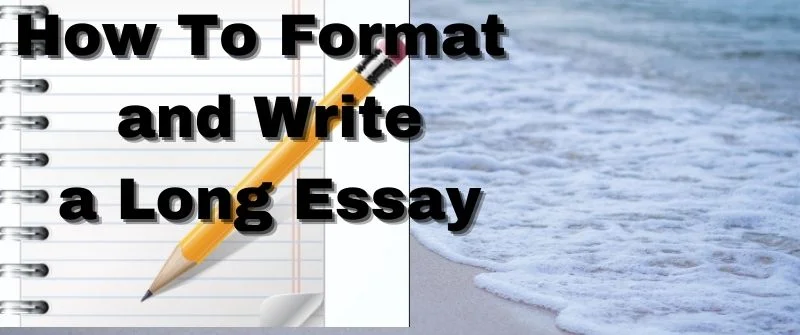
How To Format a Long Essay
A long essay is an essay longer than 3 pages. This varies with the level of education. Some college instructors will view a five-page essay as short and others as average.
The phrase ‘long essay’ can be used to refer to the number of words, the number of pages, and sometimes the number of paragraphs. Most instructors usually clarify how long essays should be before issuing them.

What Is A Long Essay In Research?
A long essay in research is a ten-page or more essay that analyses, interprets, and compares researched ideas to the ideas of the writer.
Research papers are usually longer than academic essays. They are usually more detailed and test writing and scholarly research skills.
People Also Read: Essay Writing Topics with Answers:21 Examples in English
How to Write Long Essays
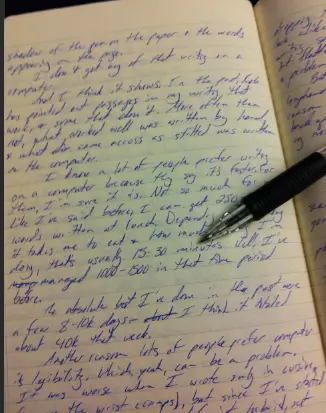
Most students complain that it is overwhelming to write long essays. The stress that comes with writing long essays contributes to many students wanting to put them off. Tackling long essays can become easy by following the following steps:
1. Pick a Topic
When granted the freedom to choose a topic, pick a broad and specific one. It is easy to find and write about a broad topic.
Topics with scarce research material generate little content and are not suitable for long essays.
One may likely end up getting stranded halfway into the essay with nothing more to write about on a topic. For example, the effects of Racism in America in the 2000s is a broader topic than the effects of racism in America in 2004.
2. Start your Research
Researching on a long essay can take hours and days. Thorough research is important in the formulation of a thesis. It makes it easy to determine the sources that are more important and valuable to your topic. The more sources you get the better and longer your essay will be.
3. Write a Thesis
The thesis statement is crucial because its shapes your entire essay. The thesis statement you formulate should be specific.
It should outline the main argument that you will try making in the essay. Use the thesis to explain why the question you want to answer is important.
In long essays, thesis statements should appear at the end of the first paragraph or on the second paragraph.
4. Finish your Research
With the thesis statement already established, continue doing research. The research should focus on the points that support the thesis statement you have come up with.
Any point that does not align with the thesis statement is not meant for your essay. All the sources you use for research should help develop your thesis statement. The sources should be credible and authentic to strongly support the thesis.
5. Make an Outline
An outline helps you organize thoughts and plan how you will write your essay. Without outlines, you are likely to get lost in the middle of your essay.
With an outline, writing is easy and fast with an organized flow of ideas. The more detailed your outline is the more ease you will have when writing the essay.
6. Write the Essay
Start writing your essay. Keep your head down and avoid distraction. Read through your writing to make sure that your ideas flow and paragraphs connect.
7. Proofread and Edit
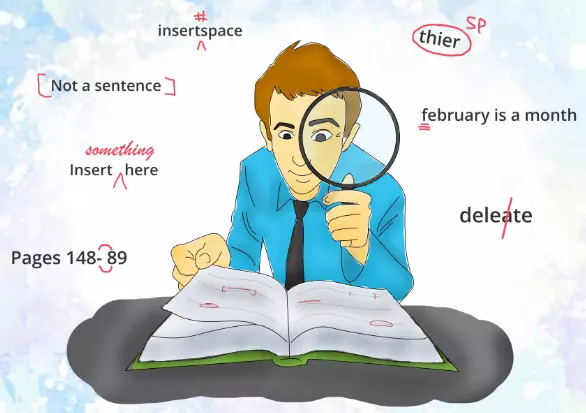
You should read your paper out loud when proofreading.
This helps you notice any grammatical, punctuation, or paraphrasing errors in your essay.
You can choose to edit the errors as you read or write them down and correct them once you are done proofreading.
People Also Read: Essay Writing Titles: Being Creative Without Topic Generators
How to Balance your Points in a Long Essay
Formulate a thesis.

To balance your points in an essay you first need a thesis statement. A thesis statement will set the tone of how your points will be balanced.
With the thesis, you will be able to understand your essay better. This in turn helps you balance your points.
Write the introduction paragraph
Introduce your essay in the best way possible. Make it clear what you will talk about in your essay. Do not use fancy language that the reader will find hard to understand. At the end of the introduction paragraph write the thesis statement.
Supportive paragraphs
These are paragraphs that make up the body of your essay. They explain all points in your essay. Each point should be represented in its paragraph.
The first sentence of each paragraph is the topic sentence that states the point you will talk about. Explain the points exhaustively as the paragraph progresses.
People Also Read: Linking Words for Essay Writing: Useful Paragraph Phrases
The conclusion summarizes everything you have talked about in the essay. If readers happen to read the conclusion only they should grasp everything about your essay.
If writing a conclusion is hard, you can use your thesis statement as the conclusion because it also presents what your essay is all about.
Tips on How to Format a Long Essay
Instructors give long essays to their students to test their writing skills. An example of such a long task is writing a 4000-word essay that can take someone quite some time. The standard essay format is introduction, body, and conclusion.
The format for long essays includes two introduction paragraphs, 3 ideas in the body with each idea presented in four paragraphs, and a conclusion. This gives the writer the chance to achieve the given length.
People Also Read: Is Using an Essay Writing Service Cheating: It’s Legal
How to Make an Essay Long the Smart Way

Essays can be made long in the following way:
1. Expanding descriptions
Descriptions are very important, especially in descriptive essays.
Even if you have defined them you can add more information to make them more detailed.
2. Enhancing transitions
Transitions not only enable the reader to smoothly navigate through your points but also add length to your essay.
Additionally, great transitions make your essay better and are signs of a great writer.
This is different for short essays. Read more on how to write short essays to know why long transitions may not be included.
3. Expanding paragraphs
Go through your essay and find points that are not explained clearly and explain them clearly.
You can’t know everything about a topic. There will be always relevant information to add to the points of your essay. You can explain the basics if you did not do so and define important terms as well.
4. Adding the Introduction
No rule states that introductions should be short. They should be detailed because they tell the reader what to expect and set the tone for your essay. If you rushed over the introduction revise it and add more ideas to make it detailed and catchier.
5. Make sure that you have Included Everything
Revisit your outline and check whether you have included all the points you wanted to in the essay. If not, add them. Sometimes you may rush when writing the essay and forget to include all the points you intended to.
6. Checking the Assignment Again
Reading the assignment again can help you think of new ideas to include in your essay. This is because you may not have exhausted everything on the topic and reading the assignment again can open up your mind to a new thinking dimension. Also, you may have missed something in the instructions that you should add to the essay.
7. Add Quotations
Quotations help show the reader that you understand what you are writing about. You can bring in two quotes from famous writers to support your arguments. Always remember to cite and reference them to avoid plagiarism.
8. Asking a Friend what is Missing
After doing all of the above and still not achieving the length you want, ask a friend to read your essay. They will help you identify what is missing and unclear in your work. It is not easy receiving constructive criticism in your work but that is one way to make it better.

When not handling complex essays and academic writing tasks, Josh is busy advising students on how to pass assignments. In spare time, he loves playing football or walking with his dog around the park.
Related posts
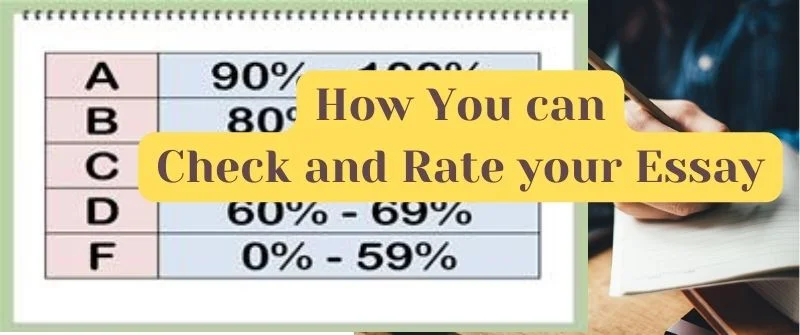
Check My Essay Grade
Check My Essay Grade: How To Rate Your Essay
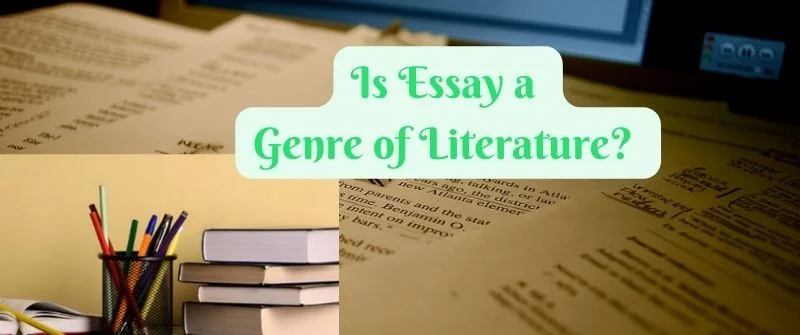
Is Essay a Genre
Is Essay a Genre of Literature: Its Structure and Examples
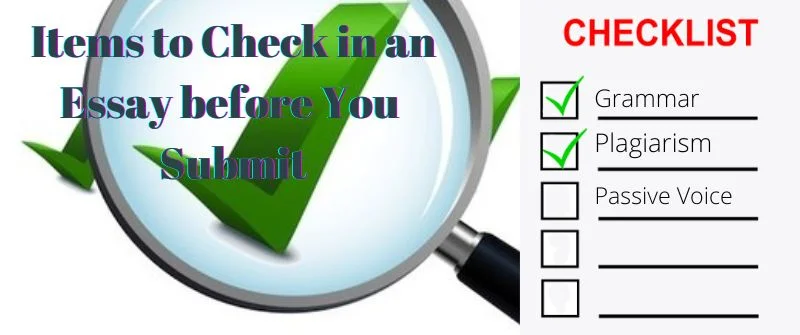
check my essay
Check My Essay Free From Grammar, Plagiarism, To Quality

The Secret(s) to Getting Through Long Papers

By Sophie, a Writing Center Coach
It’s the beginning of the semester—meaning, as a graduate student, it’s time for me to get back into the groove of planning and writing long papers. For me, the hardest part of approaching a paper is coming up with a topic that will stay interesting to me throughout the research and writing process. A good example of this is from the end of last semester, when I found myself dreading the final paper for my archives class. We covered so many interesting topics in the class, it was hard to decide which one to choose.
In my experience, a bad topic can make the writing process feel infinitely longer and more stressful. As I thought about my archives paper, I worried about finding something that I could focus on for 12 pages. So many of the topics in my class felt interwoven, and I was afraid it would be hard to pick out one thread. If I try to start a long paper without planning, I’ll end up staring at the same sentence or paragraph for hours, trying to figure out what I could possibly say next.
So, when I finally had to commit to a topic, I decided to break down the process into a few fun steps. Dividing it up helped take away some of my worries and made the process easier because I only had to do one step at a time. Here’s how I got started:
1) Create a real brainstorming session
First, I decided to meet up with a few of my friends who were also in the class. We went to a coffee shop we all like, and we brought our notes and readings from the class. None of us had a concrete idea about what to write; we just wanted to throw some possibilities out to see how other people would react to them.
We started by talking about some of the things we found funny or interesting in previous class discussions. As we talked, we found natural points of disagreement and interest. I took notes about points that stuck out to me. At the end of the conversation, I had a document full of questions and arguments that I wanted to explore further.
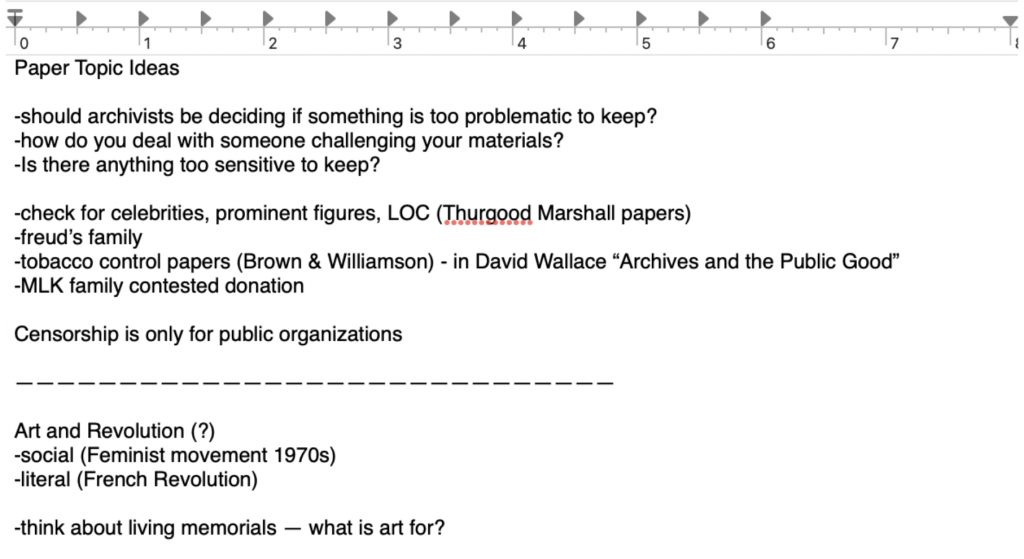
My friends also thought of topics, but they arrived at their ideas in different ways. One of my friends kept coming back to a short paper she had already written, and by talking about it, she discovered that she had much more to say. Another friend talked about something that he felt was conspicuously missing from our class discussions, so he decided that this paper would be a good opportunity to learn more.
All three of us came out of the session with inspiration and initial feedback. This step reminded me of the value of talking through my ideas, especially since my peers could push me to think more deeply about particular questions. Plus, connecting with my classmates through discussion helped me get excited about writing.
Alternatively, I know that, for some people, meeting with friends isn’t always effective; there are also other ways to brainstorm. Sometimes, it helps to talk to someone who doesn’t know about the class or topic—like a Writing Center coach ! For others, the note-taking part could be like having a conversation with yourself, which might be all you need. The Writing and Learning Centers also have some great tools for brainstorming if you prefer to work independently.
2) Conduct some initial research
Once I had the beginnings of an idea, I decided to look for sources that could help me narrow my topic. The first place I go to find scholarly articles is the UNC Libraries’ page with “Resource Tools.” At this phase, I like to do keyword searches with Articles+. When you open the advanced search options, you can limit your results to be really specific by choosing a discipline, language, date the material was published, and whether the source needs to be scholarly/peer reviewed. In this case, I used “AND” to limit my results to articles with all of my desired keywords, like: “Sexual material” AND “Archives.” There’s another great article that explains the logic behind this kind of search, which uses Boolean logic.
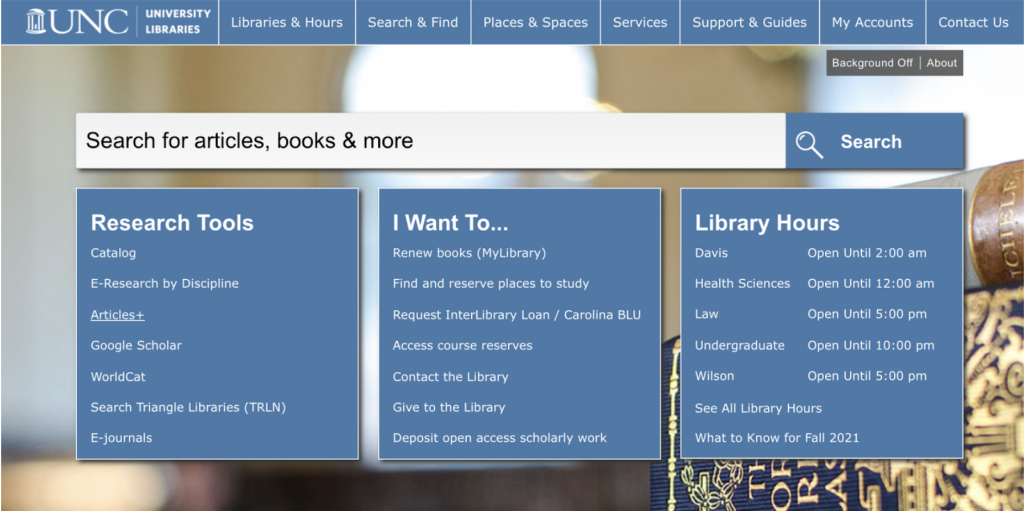
After I’ve combed through relevant results for one search, I’ll usually adjust my keywords to see if anything new pops up. I’ll also see if the best articles (the ones that feel most related to my topic) have been cited by anyone else and whether those articles have something to offer me. I also repeat this process with Google Scholar and with the “E-research by Discipline” option, which will lead me to specific databases for my field.
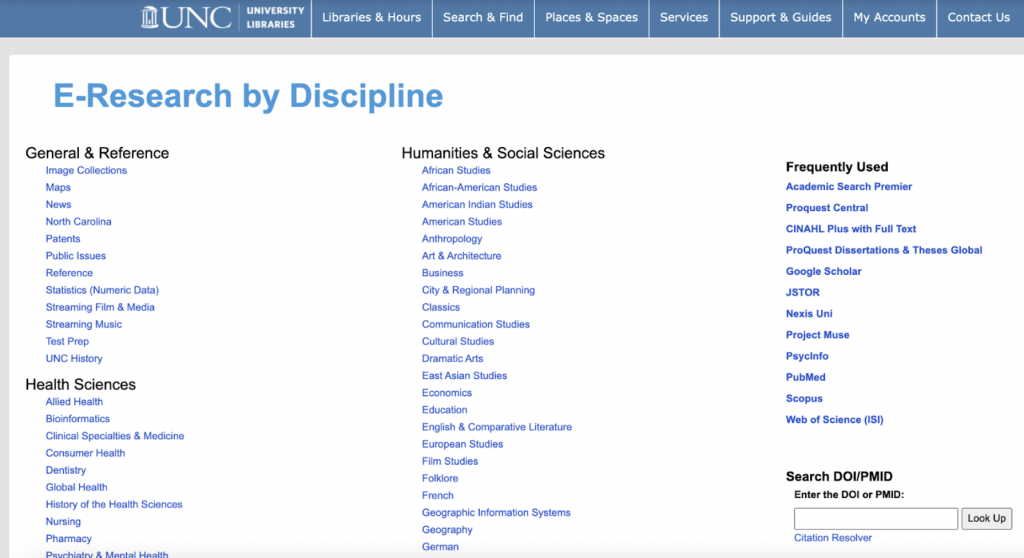
In this case, I used the Information and Library Science option, which took me to the best databases for journals in my discipline. Searching within a discipline allows me to think more carefully about my keywords; I might not have to include “archives,” or “libraries,” for example, because many of the articles are already about archives.
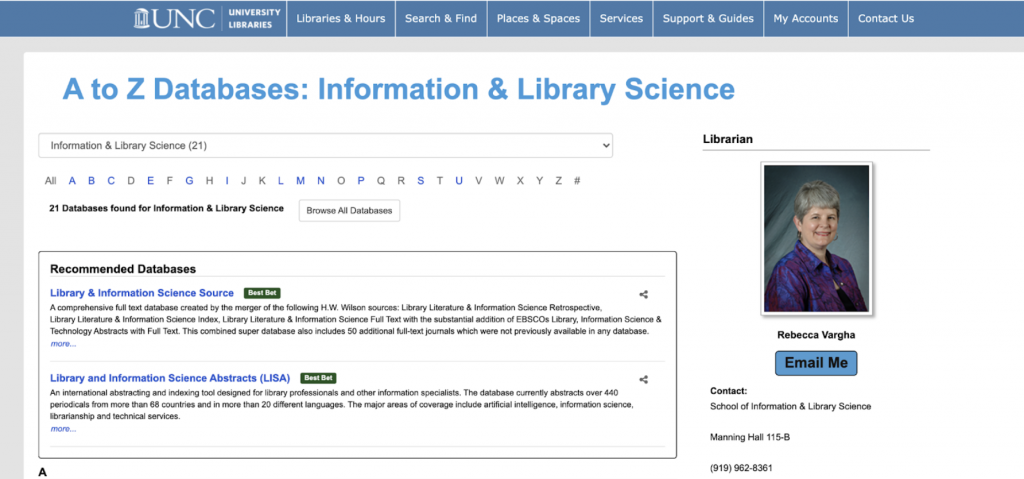
As I’m going along, I like to save any articles that I find in Zotero, a citation manager that I downloaded from the library’s website. Within Zotero, I make a folder for the assignment (“Final Paper”), and it automatically saves all the information I need to quickly go back to the article if I need it. (Note: I first learned about using Zotero from a helpful university librarian, so if you’re new to citation managers, it might be helpful to have a librarian give you a tutorial. You can also read another blog article on using Zotero .)
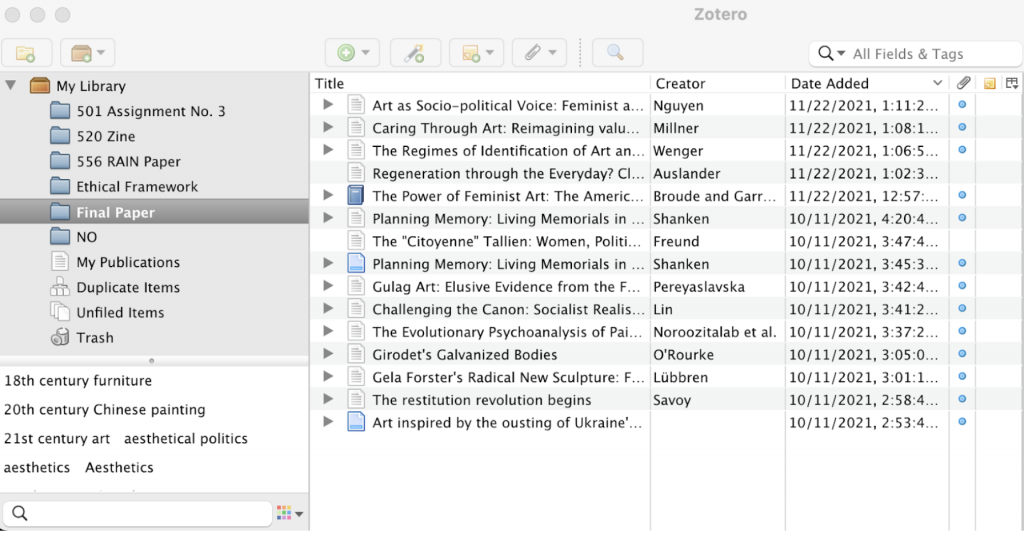
At the end of this process, I usually have a file full of “maybe” sources that I could come back to later. This helps give me an idea of what people have already said about this topic and where I might be able to add to the conversation.
3) Meet with your professor
After I came up with an idea and did some preliminary research, I thought it would be a good idea to check in with my professor during office hours. Since my professor is an expert in the field, I knew she would have a better sense of the context surrounding my research question.
(Note: Sometimes I like to go to office hours before I do any research; getting some expertise at the beginning can make the search process even faster. In this case, my professor encouraged us to find what we could before checking in with her.)
Before the meeting, I read through the abstracts of the sources I had already found in my preliminary research (those were saved in my Zotero library). Based on those, I wrote down some questions that I had about the topic. I met with my professor for about 15 minutes, and in that time, I pitched my question and told her what I had already found. She was able to direct me to some additional books and cases to look at, and I wrote those down to research later.
My professor also encouraged me to post my topic in our class’ Sakai forum. She created a discussion page specifically for final topic ideas so that my other classmates could provide feedback. Often, she said, students with similar topics will find sources that are helpful to each other, so the forum is a good place to share resources. I left the meeting with a strong sense of direction of what I needed to begin the actual writing.
After going through these steps, I felt like I had a good idea of what I wanted to write about and some evidence that could support my argument. Still, because it was such a long paper, I felt like I needed help to get started on the outline and the actual writing process. So, I decided to make a Writing Center Appointment to get my ideas in order and to make a plan for finishing the paper on time. Again, since I’m a person who likes to talk through my ideas, it was helpful to hear another person’s reaction to my topic so far. It also gave me a self-imposed deadline to complete these initial steps.
Breaking down the first few steps of writing my research paper helped me think of it as a list of small tasks to check off instead of one giant, frustrating project. It felt good to accomplish little things that I knew would add up to finishing the whole thing. This process also led me to a topic that really excited and engaged me, so when it was time to do the final step (the actual writing), I was happy to get started.
This blog showcases the perspectives of UNC Chapel Hill community members learning and writing online. If you want to talk to a Writing and Learning Center coach about implementing strategies described in the blog, make an appointment with a writing coach , a peer tutor , or an academic coach today. Have an idea for a blog post about how you are learning and writing remotely? Contact us here .
Get science-backed answers as you write with Paperpal's Research feature
How to Write an Essay Introduction (with Examples)

The introduction of an essay plays a critical role in engaging the reader and providing contextual information about the topic. It sets the stage for the rest of the essay, establishes the tone and style, and motivates the reader to continue reading.
Table of Contents
What is an essay introduction , what to include in an essay introduction, how to create an essay structure , step-by-step process for writing an essay introduction , how to write an introduction paragraph , how to write a hook for your essay , how to include background information , how to write a thesis statement .
- Argumentative Essay Introduction Example:
- Expository Essay Introduction Example
Literary Analysis Essay Introduction Example
Check and revise – checklist for essay introduction , key takeaways , frequently asked questions .
An introduction is the opening section of an essay, paper, or other written work. It introduces the topic and provides background information, context, and an overview of what the reader can expect from the rest of the work. 1 The key is to be concise and to the point, providing enough information to engage the reader without delving into excessive detail.
The essay introduction is crucial as it sets the tone for the entire piece and provides the reader with a roadmap of what to expect. Here are key elements to include in your essay introduction:
- Hook : Start with an attention-grabbing statement or question to engage the reader. This could be a surprising fact, a relevant quote, or a compelling anecdote.
- Background information : Provide context and background information to help the reader understand the topic. This can include historical information, definitions of key terms, or an overview of the current state of affairs related to your topic.
- Thesis statement : Clearly state your main argument or position on the topic. Your thesis should be concise and specific, providing a clear direction for your essay.
Before we get into how to write an essay introduction, we need to know how it is structured. The structure of an essay is crucial for organizing your thoughts and presenting them clearly and logically. It is divided as follows: 2
- Introduction: The introduction should grab the reader’s attention with a hook, provide context, and include a thesis statement that presents the main argument or purpose of the essay.
- Body: The body should consist of focused paragraphs that support your thesis statement using evidence and analysis. Each paragraph should concentrate on a single central idea or argument and provide evidence, examples, or analysis to back it up.
- Conclusion: The conclusion should summarize the main points and restate the thesis differently. End with a final statement that leaves a lasting impression on the reader. Avoid new information or arguments.

Here’s a step-by-step guide on how to write an essay introduction:
- Start with a Hook : Begin your introduction paragraph with an attention-grabbing statement, question, quote, or anecdote related to your topic. The hook should pique the reader’s interest and encourage them to continue reading.
- Provide Background Information : This helps the reader understand the relevance and importance of the topic.
- State Your Thesis Statement : The last sentence is the main argument or point of your essay. It should be clear, concise, and directly address the topic of your essay.
- Preview the Main Points : This gives the reader an idea of what to expect and how you will support your thesis.
- Keep it Concise and Clear : Avoid going into too much detail or including information not directly relevant to your topic.
- Revise : Revise your introduction after you’ve written the rest of your essay to ensure it aligns with your final argument.
Here’s an example of an essay introduction paragraph about the importance of education:
Education is often viewed as a fundamental human right and a key social and economic development driver. As Nelson Mandela once famously said, “Education is the most powerful weapon which you can use to change the world.” It is the key to unlocking a wide range of opportunities and benefits for individuals, societies, and nations. In today’s constantly evolving world, education has become even more critical. It has expanded beyond traditional classroom learning to include digital and remote learning, making education more accessible and convenient. This essay will delve into the importance of education in empowering individuals to achieve their dreams, improving societies by promoting social justice and equality, and driving economic growth by developing a skilled workforce and promoting innovation.
This introduction paragraph example includes a hook (the quote by Nelson Mandela), provides some background information on education, and states the thesis statement (the importance of education).
This is one of the key steps in how to write an essay introduction. Crafting a compelling hook is vital because it sets the tone for your entire essay and determines whether your readers will stay interested. A good hook draws the reader in and sets the stage for the rest of your essay.
- Avoid Dry Fact : Instead of simply stating a bland fact, try to make it engaging and relevant to your topic. For example, if you’re writing about the benefits of exercise, you could start with a startling statistic like, “Did you know that regular exercise can increase your lifespan by up to seven years?”
- Avoid Using a Dictionary Definition : While definitions can be informative, they’re not always the most captivating way to start an essay. Instead, try to use a quote, anecdote, or provocative question to pique the reader’s interest. For instance, if you’re writing about freedom, you could begin with a quote from a famous freedom fighter or philosopher.
- Do Not Just State a Fact That the Reader Already Knows : This ties back to the first point—your hook should surprise or intrigue the reader. For Here’s an introduction paragraph example, if you’re writing about climate change, you could start with a thought-provoking statement like, “Despite overwhelming evidence, many people still refuse to believe in the reality of climate change.”
Including background information in the introduction section of your essay is important to provide context and establish the relevance of your topic. When writing the background information, you can follow these steps:
- Start with a General Statement: Begin with a general statement about the topic and gradually narrow it down to your specific focus. For example, when discussing the impact of social media, you can begin by making a broad statement about social media and its widespread use in today’s society, as follows: “Social media has become an integral part of modern life, with billions of users worldwide.”
- Define Key Terms : Define any key terms or concepts that may be unfamiliar to your readers but are essential for understanding your argument.
- Provide Relevant Statistics: Use statistics or facts to highlight the significance of the issue you’re discussing. For instance, “According to a report by Statista, the number of social media users is expected to reach 4.41 billion by 2025.”
- Discuss the Evolution: Mention previous research or studies that have been conducted on the topic, especially those that are relevant to your argument. Mention key milestones or developments that have shaped its current impact. You can also outline some of the major effects of social media. For example, you can briefly describe how social media has evolved, including positives such as increased connectivity and issues like cyberbullying and privacy concerns.
- Transition to Your Thesis: Use the background information to lead into your thesis statement, which should clearly state the main argument or purpose of your essay. For example, “Given its pervasive influence, it is crucial to examine the impact of social media on mental health.”

A thesis statement is a concise summary of the main point or claim of an essay, research paper, or other type of academic writing. It appears near the end of the introduction. Here’s how to write a thesis statement:
- Identify the topic: Start by identifying the topic of your essay. For example, if your essay is about the importance of exercise for overall health, your topic is “exercise.”
- State your position: Next, state your position or claim about the topic. This is the main argument or point you want to make. For example, if you believe that regular exercise is crucial for maintaining good health, your position could be: “Regular exercise is essential for maintaining good health.”
- Support your position: Provide a brief overview of the reasons or evidence that support your position. These will be the main points of your essay. For example, if you’re writing an essay about the importance of exercise, you could mention the physical health benefits, mental health benefits, and the role of exercise in disease prevention.
- Make it specific: Ensure your thesis statement clearly states what you will discuss in your essay. For example, instead of saying, “Exercise is good for you,” you could say, “Regular exercise, including cardiovascular and strength training, can improve overall health and reduce the risk of chronic diseases.”
Examples of essay introduction
Here are examples of essay introductions for different types of essays:
Argumentative Essay Introduction Example:
Topic: Should the voting age be lowered to 16?
“The question of whether the voting age should be lowered to 16 has sparked nationwide debate. While some argue that 16-year-olds lack the requisite maturity and knowledge to make informed decisions, others argue that doing so would imbue young people with agency and give them a voice in shaping their future.”
Expository Essay Introduction Example
Topic: The benefits of regular exercise
“In today’s fast-paced world, the importance of regular exercise cannot be overstated. From improving physical health to boosting mental well-being, the benefits of exercise are numerous and far-reaching. This essay will examine the various advantages of regular exercise and provide tips on incorporating it into your daily routine.”
Text: “To Kill a Mockingbird” by Harper Lee
“Harper Lee’s novel, ‘To Kill a Mockingbird,’ is a timeless classic that explores themes of racism, injustice, and morality in the American South. Through the eyes of young Scout Finch, the reader is taken on a journey that challenges societal norms and forces characters to confront their prejudices. This essay will analyze the novel’s use of symbolism, character development, and narrative structure to uncover its deeper meaning and relevance to contemporary society.”
- Engaging and Relevant First Sentence : The opening sentence captures the reader’s attention and relates directly to the topic.
- Background Information : Enough background information is introduced to provide context for the thesis statement.
- Definition of Important Terms : Key terms or concepts that might be unfamiliar to the audience or are central to the argument are defined.
- Clear Thesis Statement : The thesis statement presents the main point or argument of the essay.
- Relevance to Main Body : Everything in the introduction directly relates to and sets up the discussion in the main body of the essay.

Writing a strong introduction is crucial for setting the tone and context of your essay. Here are the key takeaways for how to write essay introduction: 3
- Hook the Reader : Start with an engaging hook to grab the reader’s attention. This could be a compelling question, a surprising fact, a relevant quote, or an anecdote.
- Provide Background : Give a brief overview of the topic, setting the context and stage for the discussion.
- Thesis Statement : State your thesis, which is the main argument or point of your essay. It should be concise, clear, and specific.
- Preview the Structure : Outline the main points or arguments to help the reader understand the organization of your essay.
- Keep it Concise : Avoid including unnecessary details or information not directly related to your thesis.
- Revise and Edit : Revise your introduction to ensure clarity, coherence, and relevance. Check for grammar and spelling errors.
- Seek Feedback : Get feedback from peers or instructors to improve your introduction further.
The purpose of an essay introduction is to give an overview of the topic, context, and main ideas of the essay. It is meant to engage the reader, establish the tone for the rest of the essay, and introduce the thesis statement or central argument.
An essay introduction typically ranges from 5-10% of the total word count. For example, in a 1,000-word essay, the introduction would be roughly 50-100 words. However, the length can vary depending on the complexity of the topic and the overall length of the essay.
An essay introduction is critical in engaging the reader and providing contextual information about the topic. To ensure its effectiveness, consider incorporating these key elements: a compelling hook, background information, a clear thesis statement, an outline of the essay’s scope, a smooth transition to the body, and optional signposting sentences.
The process of writing an essay introduction is not necessarily straightforward, but there are several strategies that can be employed to achieve this end. When experiencing difficulty initiating the process, consider the following techniques: begin with an anecdote, a quotation, an image, a question, or a startling fact to pique the reader’s interest. It may also be helpful to consider the five W’s of journalism: who, what, when, where, why, and how. For instance, an anecdotal opening could be structured as follows: “As I ascended the stage, momentarily blinded by the intense lights, I could sense the weight of a hundred eyes upon me, anticipating my next move. The topic of discussion was climate change, a subject I was passionate about, and it was my first public speaking event. Little did I know , that pivotal moment would not only alter my perspective but also chart my life’s course.”
Crafting a compelling thesis statement for your introduction paragraph is crucial to grab your reader’s attention. To achieve this, avoid using overused phrases such as “In this paper, I will write about” or “I will focus on” as they lack originality. Instead, strive to engage your reader by substantiating your stance or proposition with a “so what” clause. While writing your thesis statement, aim to be precise, succinct, and clear in conveying your main argument.
To create an effective essay introduction, ensure it is clear, engaging, relevant, and contains a concise thesis statement. It should transition smoothly into the essay and be long enough to cover necessary points but not become overwhelming. Seek feedback from peers or instructors to assess its effectiveness.
References
- Cui, L. (2022). Unit 6 Essay Introduction. Building Academic Writing Skills .
- West, H., Malcolm, G., Keywood, S., & Hill, J. (2019). Writing a successful essay. Journal of Geography in Higher Education , 43 (4), 609-617.
- Beavers, M. E., Thoune, D. L., & McBeth, M. (2023). Bibliographic Essay: Reading, Researching, Teaching, and Writing with Hooks: A Queer Literacy Sponsorship. College English, 85(3), 230-242.
Paperpal is a comprehensive AI writing toolkit that helps students and researchers achieve 2x the writing in half the time. It leverages 21+ years of STM experience and insights from millions of research articles to provide in-depth academic writing, language editing, and submission readiness support to help you write better, faster.
Get accurate academic translations, rewriting support, grammar checks, vocabulary suggestions, and generative AI assistance that delivers human precision at machine speed. Try for free or upgrade to Paperpal Prime starting at US$19 a month to access premium features, including consistency, plagiarism, and 30+ submission readiness checks to help you succeed.
Experience the future of academic writing – Sign up to Paperpal and start writing for free!
Related Reads:
- What is an Argumentative Essay? How to Write It (With Examples)
- How to Paraphrase Research Papers Effectively
- How to Cite Social Media Sources in Academic Writing?
- How Long Should a Chapter Be?
Similarity Checks: The Author’s Guide to Plagiarism and Responsible Writing
Types of plagiarism and 6 tips to avoid it in your writing , you may also like, 4 ways paperpal encourages responsible writing with ai, what are scholarly sources and where can you..., how to write a hypothesis types and examples , what is academic writing: tips for students, what is hedging in academic writing , how to use ai to enhance your college..., how to use paperpal to generate emails &..., ai in education: it’s time to change the..., is it ethical to use ai-generated abstracts without..., do plagiarism checkers detect ai content.
- PRO Courses Guides New Tech Help Pro Expert Videos About wikiHow Pro Upgrade Sign In
- EDIT Edit this Article
- EXPLORE Tech Help Pro About Us Random Article Quizzes Request a New Article Community Dashboard This Or That Game Popular Categories Arts and Entertainment Artwork Books Movies Computers and Electronics Computers Phone Skills Technology Hacks Health Men's Health Mental Health Women's Health Relationships Dating Love Relationship Issues Hobbies and Crafts Crafts Drawing Games Education & Communication Communication Skills Personal Development Studying Personal Care and Style Fashion Hair Care Personal Hygiene Youth Personal Care School Stuff Dating All Categories Arts and Entertainment Finance and Business Home and Garden Relationship Quizzes Cars & Other Vehicles Food and Entertaining Personal Care and Style Sports and Fitness Computers and Electronics Health Pets and Animals Travel Education & Communication Hobbies and Crafts Philosophy and Religion Work World Family Life Holidays and Traditions Relationships Youth
- Browse Articles
- Learn Something New
- Quizzes Hot
- This Or That Game
- Train Your Brain
- Explore More
- Support wikiHow
- About wikiHow
- Log in / Sign up
- Education and Communications
- College University and Postgraduate
- Academic Writing
How to Write an Essay in Under 30 Minutes
Last Updated: December 19, 2023 Fact Checked
This article was co-authored by Arash Fayz . Arash Fayz is the Co-Founder and Executive Director of LA Tutors 123, an academic consulting and private tutoring company based in Los Angeles, California. Arash has over 10 years of educational consulting experience, managing the tutoring of students of all ages, abilities, and backgrounds to score higher on standardized tests and gain admission to their target schools. He has a BA in Applied Mathematics and Computer Science from the University of California, Los Angeles. There are 12 references cited in this article, which can be found at the bottom of the page. This article has been fact-checked, ensuring the accuracy of any cited facts and confirming the authority of its sources. This article has been viewed 601,574 times.
If you’re taking your SATs this year, you may be preparing to write a solid essay within the 30 minute time limit. Or you might be trying to improve your writing speed to complete essay exams faster and more efficiently. Writing a five paragraph essay in under 30 minutes can seem daunting, but with the right planning and time management, it is certainly achievable.
Sample Essays

Planning the Essay

- For example, you may get a prompt in the form of quotation: “Time has a doomsday book, on whose pages he is continually recording illustrious names. But as often as a new name is written there, an old one disappears. Only a few stand in illuminated characters never to be effaced.” Henry Wadsworth Longfellow [3] X Research source
- You may then receive a question attached to the prompt: “Are there some heroes who will be remembered forever? Or are all heroes doomed to be forgotten one day?" Plan your response, and then write an essay to explain your views on this issue. Be sure to support your position with specific points and examples. You may use personal examples or examples from your reading, observations, or, knowledge of subjects such as history, literature, science. [4] X Research source

- For example, you may brainstorm the Longfellow quote/question by thinking of personal examples of heroes who are remembered or forgotten, such as family members, friends, teachers, or peers who have acted as heroes to you or to others. Or you may focus on a historical figure who seems to be a forgotten hero or a decorated hero.
- This essay question is asking for two sides of the discussion, the forgotten hero and the remembered hero. Your thesis should discuss both sides and choose one side to argue for or against.
- You may choose to spotlight a historical figure who encountered opposition and challenges in her life, such as the suffragette Susan B. Anthony. Anthony worked tirelessly for decades to get the government to recognize women’s right to vote, and was often derided by the government and by individuals within her own organization. She is a good example of a hero who was not recognized as a trailblazer until late in her life, though she is now remembered as a heroine in history. Try to refer back to the quotation in the essay prompt in your thesis, if possible, to show you have read the entire question.
- A possible thesis statement could be: “Though Longfellow argues that names, or heroes, may be forgotten over time, one historical figure, Susan B. Anthony, was derided in her lifetime for her beliefs but is now remembered as a heroine of her time.”

- Introduction: Your beginning paragraph should contain an engaging first sentence and your thesis statement. Some writers find it easier to write create a temporary introduction and revise it once they are finished with the essay. This will ensure the introduction is cohesive with the rest of the essay.
- Conclusion: This paragraph should summarize your main argument and restate your thesis. You may also want to include last thoughts around the essay question.
Writing the Essay

- Try to spend two to three minutes on each body paragraph. Then, take three minutes on your conclusion paragraph and go back to your introduction. Spend the last three minutes revising your introduction so it matches the tone and perspective of the rest of your essay.

- An interesting or surprising example: This could be a personal experience or a key moment in the life of the historical figure you are discussing in your essay. For example, you may discuss Anthony’s childhood as a Quaker and her later adoption of more casual dress and growing interest in social reform at the age of 26. [9] X Trustworthy Source University of North Carolina Writing Center UNC's on-campus and online instructional service that provides assistance to students, faculty, and others during the writing process Go to source
- A provocative quotation: This could be from a source you used for your essay or one that feels relevant to your topic. For example, you may use a well known quote from Anthony, such as: “Cautious, careful people, always casting about to preserve their reputation and social standing, never can bring about a reform. Those who are really in earnest must be willing to be anything or nothing in the world's estimation, and publicly and privately, in season and out, avow their sympathy with despised and persecuted ideas and their advocates, and bear the consequences.” [10] X Research source
- A vivid anecdote: An anecdote is a very short story that carries moral or symbolic weight. Think of an anecdote that might be a poetic or powerful way to start your essay.
- A thought provoking question: create a question that will get your reader thinking and engaged in your topic. For example: “Did you ever wonder how women received the right to vote in the United States?”

- Body paragraph 1: You may start by discussing Anthony’s early successes. Look at the establishment of the Women’s Loyal National League in 1863 by Anthony and Stanton. As the first national women’s political organization in the United States, it had a membership of 5000 and provided a platform for women to speak out on issues like slavery and women’s right to vote. [11] X Research source
- Body paragraph 2: You may discuss Anthony’s mid career struggles. Look at the split in the women’s movement in May 1869, with the establishment of the National Woman’s Suffrage Association (NWSA) by Anthony and Stanton, and the rival American Woman Suffrage Association (AWSA). Note how after the Civil War, Anthony devoted her time and life to the suffrage movement, assuming leadership of the NWSA in 1890 and continuing to advocate for women’s rights. Anthony also remained unmarried, which gave her an advantage under the law, as married women at the time were not permitted to sign official documents and had to defer to their husbands. [12] X Research source
- Body paragraph 3: You may discuss Anthony’s later life, including her many speaking engagements throughout the United States on the need for women’s suffrage and equal rights. Though Anthony died in 1906, and did not live to see the passing of the Nineteenth Amendment of the Constitution, affording women the right to vote in the United States in 1920, her forty years of tireless work paved the way for the legal precedent and gave women a strong sense of empowerment and equality. [13] X Research source

- For example, you may restate your thesis: “Throughout her life, Susan B. Anthony’s sacrificed her time, energy, and personal livelihood to advocate for women’s rights, proving that though many heroes may be forgotten, their actions will live on in history.”
Editing the Essay

- For example, an essay on Susan B. Anthony could have the title: “An Unsung Heroine” or “Susan B. Anthony: An Advocate for Change”.
Community Q&A
You Might Also Like

- ↑ Arash Fayz. Test Prep Tutor. Expert Interview. 1 November 2019.
- ↑ https://libguides.newcastle.edu.au/essay_planning/essay-planning
- ↑ https://resources.warburg.sas.ac.uk/pdf/emh823b2778298.pdf
- ↑ https://www.hunter.cuny.edu/rwc/handouts/the-writing-process-1/invention/Writing-a-Response-or-Reaction-Paper
- ↑ https://writingcenter.unc.edu/tips-and-tools/thesis-statements/
- ↑ https://kidshealth.org/en/teens/test-terror.html
- ↑ https://writingcenter.unc.edu/tips-and-tools/introductions/
- ↑ https://writingcenter.unc.edu/tips-and-tools/should-i-use-i/
- ↑ https://www.rochester.edu/sba/
- ↑ https://repository.library.georgetown.edu/bitstream/handle/10822/553350/laCossJoanHarkin.pdf
- ↑ https://www.womenshistory.org/education-resources/biographies/susan-b-anthony
- ↑ https://www.britannica.com/biography/Susan-B-Anthony
About This Article

In order to successfully write an essay in under 30 minutes, you need to plan it out and work efficiently. Take a good 10 minutes to plan out the essay and come up with a thesis statement that will convey your argument and help guide your essay. It may seem like a large chunk of your time, but it will save you from having to rewrite or restructure your essay later on. Then, take 15 minutes to write your introductory paragraph, body paragraphs, and conclusion. Use the last 5 minutes to proofread your essay and look for spelling, punctuation, or grammatical errors. Don’t worry about coming up with a title until you’re finished. It will be much easier then. For tips about how to edit an essay you write in under 30 minutes, keep reading! Did this summary help you? Yes No
- Send fan mail to authors
Reader Success Stories
John Smythe
Apr 8, 2017
Did this article help you?
Luis Gudino
Nov 15, 2017
Kiriyana Chernishov
Jan 10, 2018
Ima Harbingerofdeath
Jan 25, 2017
Dec 5, 2017

Featured Articles

Trending Articles

Watch Articles

- Terms of Use
- Privacy Policy
- Do Not Sell or Share My Info
- Not Selling Info
Don’t miss out! Sign up for
wikiHow’s newsletter

Student Stories: “What do you write, my lord? Words, words, words.”
Media contact.
Katy Payne she/her 360-764-0201
Editor’s Note: OSPI aims to elevate the authentic experiences of the students in Washington’s K–12 public schools. This story was written by a Washington state high school student participating in OSPI’s Student Stories Program . The author’s opinions, beliefs, and viewpoints do not necessarily reflect those of OSPI, and publication of this story does not constitute OSPI’s approval or endorsement of its contents. With questions, please contact OSPI’s Communications team at [email protected].
I’ve been thinking a lot about writing lately. I can’t seem to escape it. I doubt there will ever come a time in my life again where I do nearly as much writing as I have been this past month. College application essays, AP Literature essays, scholarship applications, my summer job application, and my OSPI blogs. With each keystroke, each new sequence of syllables, I think more and more about the practice as a whole.
Last year I hated my writing. Any jumble of words produced by this mind and these hands was, to me, the worst thing I’d ever read. This was because last year I had to completely rewire the way I had always thought about writing. For so long I had been able to get through my English classes by relying solely on a single process. Five paragraphs: outlining intro, body example #1, body example #2, body example #3, topped off with a conclusion reiterating everything I’ve already said. It was a formula that had worked for so many years, even through two honors English language arts classes. Come my junior year, however, it became clear that this was no longer going to cut it. Megan, meet AP English Language and Composition.
Although there was a good deal of non-fiction reading, AP Lang was primarily a composition class over anything else. The first thing I learned when I walked through those doors was that a five paragraph essay was too formulaic, and such predictability leads to essays that can be boring reads. I learned the hard way that an essay should flow, it should have as many body paragraphs as the idea needs to be properly communicated, and each paragraph should build on or somehow connect to the last.
I hated this new process, I thought. In reality, I hated learning it. It contradicted everything that made sense to my brain, the way I was taught to write. The organized system I knew, I found comfort in, wasn’t satisfactory anymore. Sure, the introduction and conclusion still stand, but most of the essay was thrown out the window.
I often wondered why writing was taught the way it is in the first place if, to be successful in their writing as high schoolers and beyond, a student must relearn to write. The simple answer is that it is the easiest way for young students to begin to grasp longer forms of writing, which makes a lot of sense. I’ve never found this answer to be fully satisfactory though, as it doesn’t answer my second underlying question: Why do we still lack a more substantive transition to the writing demanded of us later on? Now seems like the moment in which I introduce an end-all be-all solution, but I’m not sure there is one. I have no expertise other than being a student in the public school system for the past 13 years, and as a result have only known one method of long-term English language arts education.
As such, I can only offer an idea: More exposure. Throughout nearly all my English education we read books, not essays (even though essays are what we are expected to write). By no means am I saying that children should read fewer books, though. Books are incredible works of art, and reading provides us with so many benefits. What I am saying, however, is that I believe providing essays to middle schoolers as reading materials in addition to longer works like novels could help bridge the gap between the five paragraph essay and more creative, flowing works. If children learn by imitation, how are we supposed to imitate something we’ve never seen?
In terms of expectations, I felt that the transition from a formulaic essay to something more thoughtful and advanced was expected of me from the moment I signed up for an AP English class. In terms of my skill and progression, the transition took about three months of taking AP Lang. In an ideal world, though, I wouldn’t have been under expectations for those few months; I would have crossed that bridge somewhere before my junior year of high school. In reality I believe I was able to cross that bridge so quickly in part due to the pressure of College Board expectations, but primarily due to the sheer number of essays we read in class. Consider the Lobster by David Foster Wallace, Politics and the English Language by George Orwell, The Owl Has Flown by Sven Birkerts, Seeing by Annie Dillard, and so many more. We also annotated essays of varying scores from actual college students, and listened to speeches like David Foster Wallace’s This is Water . By the end of my first semester in AP Lang, I felt so thoroughly exposed to short-form literature that I could use the techniques I observed in these works and confidently apply them to my own essays, effectively bridging the previously mentioned “gap.”
The way we write influences the way we think, and, by extension, the way we communicate and interact with those around us. As such, I believe we need to begin to think about English language arts education as a path, in which each step builds on the last and leads to the next, more than we currently do.
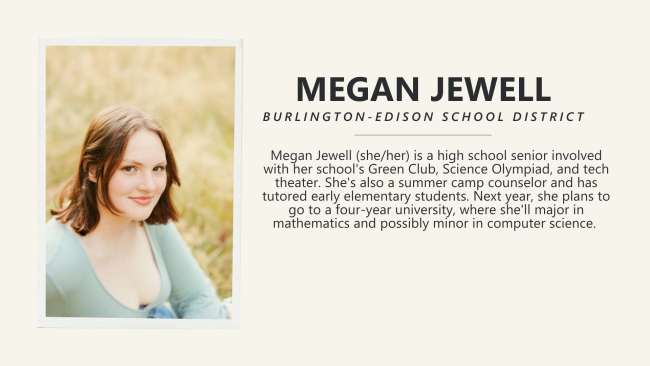
Related News

Elementary Students Take Charge Running Their Own BizTown!

Olympia Students Plant Trees to Restore Watersheds | Environmental Literacy
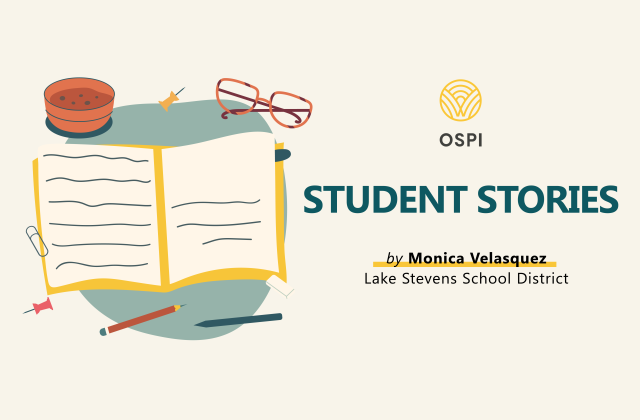
Student Stories: My Experience of Running Start
- Artificial Intelligence (AI)
- Learning Standards
- Performance Assessments
- Resources and Laws
- K-12 Learning Standards
- Computer Science Grants
- Learning Standards and Best Practices for Instruction
- Comprehensive Literacy Plan (CLP)
- Strengthening Student Educational Outcomes (SSEO)
- Washington Reading Corps
- Assessments
- Environmental and Sustainability Literacy Plan
- Resources and Research
- About FEPPP
- Trainings and Events
- Committees, Meetings, and Rosters
- Partnership
- Resources and Links
- Legislation and Policy
- Laws & Resources
- ASB Frequently Asked Questions
- Comprehensive Sexual Health Education Implementation
- Sexual Health Education Standards Comparison
- 2023 Sexual Health Education Curriculum Review
- Sexual Health Curriculum Review Tools
- Training/Staff Development
- Math Graduation Requirements
- Family Resources
- Modeling Our World with Mathematics
- Modern Algebra 2
- Outdoor Education for All Program
- Grants, Resources, and Supports
- Professional Learning Network
- SEL Online Education Module
- Academic Learning is Social and Emotional: Integration Tools
- Washington-Developed SEL Resources
- Learning Standards & Graduation Requirements
- OSPI-Developed Social Studies Assessments
- Resources for K-12 Social Studies
- Civic Education
- Holocaust Education
- History Day Program Components
- Washington History Day and Partners
- Temperance and Good Citizenship Day
- Social Studies Grant Opportunities
- Social Studies Laws and Regulations
- Social Studies Cadre of Educators
- Social Studies Showcase
- Early Learning Curriculum
- Elementary Curriculum
- Middle School Unit 1C Washington State History—Medicine Creek Treaty of 1854
- High School Unit 1 Contemporary World Problems
- High School Unit 1 US History
- High School Unit 2 Contemporary World Problems
- High School Unit 2 US History
- High School Unit 3 Contemporary World Problems
- High School Unit 3 US History
- High School Unit 4 Contemporary World Problems
- High School Unit 4 US History
- High School Unit 5 US History
- High School Unit 6 US History
- Tribes within Washington State
- Implementation and Training
- Indigenous Historical Conceptual Framework
- Regional Learning Project Videos
- Language Proficiency Custom Testing
- Proficiency Assessment Options
- Credits & Testing for Students
- Testing Process For Districts
- Laws/Regulations
- Washington State Seal of Biliteracy
- Talking to Young People About Race, Racism, & Equity
- Open Educational Resources
- Course Design & Instructional Materials
- Reporting Instruction and Assessment
- Washington State Learning Standards Review
- High School and Beyond Plan
- Waivers and CIA
- Career Guidance Washington Lessons
- High School Transcripts
- Graduation Pathways
- Credit Requirements
- Career and College Readiness
- Family Connection
- Whole-child Assessment
- Early Learning Collaboration
- Training and Webinars
- WaKIDS Contacts
- Professional Development
- Calculator Policy
- ELA Assessment
- Smarter Balanced Tools for Teachers
- 1% Alternate Assessment Threshold
- Access Point Frameworks and Performance Tasks
- Frequently Asked Questions
- Scoring and Reporting
- INSIGHT Portal
- State Testing Frequently Asked Questions
- Achievement Level Descriptors
- Technical Reports
- Testing Statistics (Frequency Distribution)
- Scale Scores State Assessments
- Sample Score Reports
- Request to View Your Student’s Test
- ELP Annual Assessments
- English Language Proficiency Screeners
- Alternate ACCESS
- WIDA Consortium
- Trainings, Modules, and Presentations
- Assessment Resources
- Monitoring of State Assessments
- Principal Letter Templates
- NAEP State Results
- NAEP Publications
- Timelines & Calendar
- Approval Process
- Carl D. Perkins Act
- Program of Study and Career Clusters
- 21st Century Skills
- Career Connect Washington
- Methods of Administration (MOA)
- Statewide Course Equivalencies
- Work-Based Learning
- Skill Centers
- Federal Data Collection Forms
- Special Education Data Collection Summaries
- File a Community Complaint
- Special Education Due Process Hearing Decisions
- Request Mediation (Special Education)
- Request a Due Process Hearing
- Special Education Request Facilitation
- Early Childhood Outcomes (Indicator 7)
- Transition from Part C to Part B (Indicator 12)
- Preschool Least Restrictive Environment (LRE) - Indicator 6
- Behavior and Discipline
- Disagreements and Complaints about Special Education
- Eligibility for Special Education
- Evaluations
- How Special Education Works
- Individualized Education Program (IEP)
- Making a Referral for Special Education
- Need Assistance?
- Parent and Student Rights (Procedural Safeguards)
- Placement Decisions and the Least Restrictive Environment (LRE)
- Prior Written Notice
- Transition Services (Ages 16–21)
- What Is Special Education?
- Current Nonpublic Agencies
- Rulemaking and Public Comment
- Special Education WAC and Federal IDEA
- Personnel Qualifications Guidance
- Annual Determinations
- Model Forms for Services to Students in Special Education
- Self-Study and System Analysis
- Significant Disproportionality
- Washington Integrated System of Monitoring
- Technical Assistance
- Special Education Community Complaint Decisions
- State Needs Projects
- Mental Health Related Absences
- Attendance Awareness Materials
- Improving Attendance for Schools
- Attendance Resources
- Policies, Guidance, and Data Reporting
- District Truancy Liaison
- Building Bridges Grant Program
- GATE Equity Webinar Series
- Contact Us - CISL
- Course-Based Dual Credit
- Exam-Based Dual Credit
- Transitional Kindergarten
- Early Learning Resources
- Early Learning District Liaisons
- Early Learning Fellows Lead Contact List
- How the IPTN Works
- Menus of Best Practices & Strategies
- MTSS Events
- Integrated Student Support
- MTSS Components and Resources
- Ninth Grade Success
- Equity in Student Discipline
- Student Discipline Training
- Student Transfers
- Whole Child Initiative
- Continuous School Improvement Resources
- Migrant Education Health Program
- Migrant Education Parent Advisory Council
- Migrant Education Workshops and Webinars
- Migrant Education Student Resources
- TBIP Program Guidance
- WIDA Resources
- Dual Language Education and Resources
- Title III Services
- Family Communication Templates
- Webinars and Newsletters
- Migrant & Multilingual Education Program Directory
- Tribal Languages
- Types of Tribal Schools
- State-Tribal Education Compact Schools (STECs)
- Support for Indian Education and Culture
- Curriculum Support Materials
- Rules and Regulations
- Title VI Indian Education Programs — By District
- Contact Information
- Native Educator Cultivation Program
- Tribal Consultation
- McKinney-Vento Act
- Liaison Training Update Webform
- Homeless Student Data and Legislative Reports
- Homeless Education Posters and Brochures for Outreach
- Resources for Homeless Children and Youth
- Interstate Compact for Military Children
- Foster Care Liaison Update
- Building Point of Contact Update Form
- State and Federal Requirements
- Foster Care Resources and Training
- Postsecondary Education for Foster Care
- Children and Families of Incarcerated Parents
- Project AWARE
- Youth Suicide Prevention, Intervention, & Postvention
- Best Practices & Resources
- Prevention/Intervention SAPISP Coordinators
- Behavioral Health Resources
- Continuity of Operations Plan (COOP)
- Digital/Internet Safety
- HIB Compliance Officers Contact List
- Student Threat Assessment
- School Safety and Security Staff
- Active Shooter
- Bomb Threat & Swatting
- Gangs in Schools
- School Drills
- Terrorism and Schools
- Weapons and Schools
- Youth-Centered Environmental Shift Program
- Erin's Law 2018 Curriculum Review
- Erin’s Law – House Bill 1539
- Allergies and Anaphylaxis
- Health Services Resources
- Immunizations
- School Nurse Corps
- Workforce Secondary Traumatic Stress
- 2021 COVID-19 Student Survey Results
- Healthy Youth Survey
- School Health Profiles
- Alternative Learning Experience
- Continuous Learning
- Graduation, Reality And Dual-Role Skills (GRADS)
- Guidance and Resources for Educators and Families
- HiCapPLUS Professional Learning Modules for Educators
- Home-Based Instruction
- Home/Hospital Instruction
- For Applicants
- For Schools & Districts
- Course Catalog
- Online Learning Approval Application
- Approved Online Schools and School Programs
- Approved Online Course Providers
- Getting Started Toolkit
- Open Doors Reports
- Washington's Education Options
- The Superintendent's High School Art Show
- Daniel J. Evans Civic Education Award for Students
- Washington State Honors Award
- Pre-Residency Clearance In-State Applicant
- Teacher College Recommendation
- Conditional Teacher Certificate - In-State
- Intern Substitute Certification In-State Applicants
- Emergency Substitute Certification In-State Applicants
- First Peoples' Language, Culture and Oral Traditions Certification
- Pre-Residency Clearance Out-of-State Applicant
- Residency Teacher Out-of-State
- Professional Teacher Out-of-State
- Substitute Teaching Out-of-State
- Conditional Teacher Out-of-State
- Intern Substitute Teacher Certificate Out-of-State
- Emergency Substitute Teacher Certification Out-of-State
- Foreign Trained Applicants Teacher Certification
- Residency Teacher Renewal
- Professional Teacher
- Transitional Teaching Certificate
- Conditional Teacher Certification
- Emergency Substitute Certificate
- First Peoples' Language, Culture and Oral Traditions Renewal
- Initial Teaching Certificate
- Standard/Continuing Teaching Certificate
- Provisional Teaching Certificate
- Upgrading Initial to Continuing
- Upgrade from Residency to Professional
- Converting Initial to Residency Teaching Certificate
- STEM Renewal Requirement for Teacher Certification
- Adding a CTE Certification Vocational Code (V-Code)
- Renewal of a Career and Technical Educator (CTE) Initial Certificate
- Renewal of a Career and Technical Educator (CTE) Continuing Certificate
- Career and Technical Educator Conditional Certificate
- Initial/Continuing CTE Career Guidance Specialist Certificate
- Career and Technical Educator (CTE) Director Certificate
- Washington State Certification - Frequently Asked Questions
- General Paraeducator
- English Language Learner Subject Matter
- Special Education Subject Matter
- Paraeducator First Time Applicant - Advanced Paraeducator
- English Language Learner Subject Matter Renewal
- Special Education Subject Matter Renewal
- Advanced Paraeducator Renewal
- Administrator College Recommendation
- Substitute Administrator Certificate In-State
- Conditional Administrator (Principals Only)
- Superintendent College Recommendation
- Residency Principal or Program Administrator
- Substitute Administrator Out-of-State
- Professional Principal or Program Administrator
- Initial Superintendent
- Professional Principal or Program Administrator Renewal
- Initial (Superintendent, Program Administrator, or Principal)
- Continuing (Superintendent, Program Administrator, Principal)
- Standard/Continuing Administrator Certificate
- Transitional Administrator Certificate
- Residency Principal and Program Administrator Upgrade to Professional
- Initial Upgrading to Continuing
- Initial Converting to Residency Administrator
- School Orientation and Mobility Specialist
- School Counselor First Time Applicant
- School Psychologist First Time
- School Nurse
- School Social Worker First Time
- School Occupational Therapist First Time
- School Physical Therapist First Time
- Speech Language Pathologist/Audiologist First Time
- School Behavior Analyst
- Substitute ESA
- School Behavior Analyst Renewal
- School Orientation and Mobility Specialist Renewal
- School Counselor Reissue and Renewal
- School Psychologist Reissue and Renewal Applicant
- School Nurse Renewal
- School Social Worker Renewal Applicant
- School Occupational Therapist Renewal
- School Physical Therapist Renewal Applicant
- Speech Language Pathologist/Audiologist Renewal Applicant
- Conditional ESA
- Transitional ESA Renewal
- Upgrade from Residency to Professional ESA
- Upgrade from Initial to Continuing ESA
- Converting Initial to Residency ESA
- National Board Candidate FAQ
- OSPI National Board Conditional Loan
- Support National Board Candidates
- National Board Certification and Washington State Teaching Certificate
- National Board Candidate and NBCT Clock Hours
- Washington State National Board Certified Teacher Bonus
- National Board Cohort Facilitator
- National Board Certification Regional Coordinators
- Washington State National Board Certification - NBCT Spotlight
- Professional Certification Webinars and Presentations
- Regulations and Reports
- Helpful Links
- Certification-Forms
- Professional Certification Fee Schedule
- Fingerprint Office Locations
- Fingerprint Records Forms and Resources
- Fingerprint Records Alternatives for Applicants
- Fingerprint Records Private School Applicants
- Fingerprint Records Frequently Asked Questions
- International Education
- Washington State Recommended Core Competencies for Paraeducators
- Standards for Beginning Educator Induction
- Washington State Standards for Mentoring
- Mentor Foundational Opportunities
- Mentor Specialty Opportunities
- Mentor On-going Opportunities
- Induction Leader Opportunities
- Educator Clock Hour Information
- STEM Clock Hours
- Approved Providers
- Become an Approved Provider
- Department of Health License Hours as Clock Hours Information
- Comprehensive School Counseling Programs
- School Psychology
- School Social Work
- Laws, Regulations & Guidance
- Support & Training
- Teacher-Librarians
- School Library Programs - Standards and LIT Framework
- School Library Research and Reports
- Student Growth
- Research and Reports
- Training Modules
- AWSP Leadership Framework
- CEL 5D+ Instructional Framework
- Danielson Instructional Framework
- Marzano Instructional Framework
- CEL 5D+ Teacher Evaluation Rubric 3.0
- Charlotte Danielson’s Framework for Teaching
- Marzano’s Teacher Evaluation Model
- Washington State Fellows' Network
- NBCT Leadership Opportunities
- Teacher of the Year and Regional Winners
- History Teacher of the Year
- Winners' Gallery
- Presidential Awards for Excellence in Mathematics and Science Teaching (PAEMST)
- From Seed to Apple
- ESEA Distinguished Schools Award Program
- U.S. Department of Education Green Ribbon Schools
- Blue Ribbon Schools Program
- Disciplinary Action Notices
- Investigation Forms
- Investigations FAQ
- OSPI Reports to the Legislature
- Asset Preservation Program
- High-Performance School Buildings Program
- School District Organization
- School Facilities Construction Projects Funding
- Building Condition Assessment (BCA)
- Information and Condition of Schools (ICOS)
- Forms and Applications
- Small District Energy Assessment Grant
- Emergency Repair Pool Grant
- CTE Equipment Grant Program
- Health and Safety ADA Access Grants
- Healthy Kids-Healthy Schools Grants
- Skill Centers Capital Funding
- Lead in Water Remediation Grant
- Small School District Modernization Grant
- Urgent Repair Grant
- Regulations and Guidance
- Special Education Funding In Washington State
- Applying for Safety Net Funding
- Apportionment, Enrollment, and Fiscal Reports
- Apportionment Attachments
- Budget Preparations
- District Allocation of State Resources Portal
- Election Results for School Financing
- ESD Reports and Resources
- Tools and Forms
- ABFR Guidelines
- Accounting Manual
- EHB 2242 Accounting Changes
- EHB 2242 Guidance
- Enrollment Reporting
- Federal Allocations
- Indirect Cost Rates
- Personnel Reporting
- School Apportionment Staff
- 1801 Personnel Reports
- Financial Reporting Summary
- Organization and Financing of Washington Public Schools
- Personnel Summary Reports
- Property Tax Levies
- Training and Presentations
- Legislative Budget Requests
- 2022 Proviso Reports
- Washington State Innovates
- Washington State Common School Manual
- OER Project Grants
- Nita M. Lowey Grant Competition
- Program Guidance
- Balanced Calendar
- Beginning Educator Support Team Grants
- Ask a Question about the Citizen Complaint Process
- Professional Learning Opportunities for Title I, Part A and LAP
- Fiscal Guidance
- Digital Equity and Inclusion Grant
- Education Grant Management System (EGMS)
- Private School Participation in Federal Programs
- Public Notices & Waiver Requests to the U.S. Department of Education
- State Applications and Reports Submitted to U.S. Department of Education
- Washington School Improvement Framework
- Homeless Education Grants
- Allowable Costs
- Educator Equity Data Collection
- LifeSkills Training (LST) Substance Abuse Prevention Grants
- Rural Education Initiative
- Student Support and Academic Enrichment (Title IV, Part A)
- Washington School Climate Transformation Grant (SCTG)
- Federal Funding Contact Information
- CGA Contacts
- Meals for Washington Students
- Washington School Meals Application Finder
- At-Risk Afterschool Meals
- Family Day Care Home Providers/Sponsors
- Meal Patterns and Menu Planning
- CACFP Requirements and Materials
- Child and Adult Care Food Program Training
- Menu Planning and Meal Patterns
- Bulletins and Updates
- Summer Food Service Program Training
- Food Distribution
- Procurement
- Local Food for Schools
- Food Service Management Companies
- Claims, Fiscal Information and Resources
- Washington Integrated Nutrition System (WINS)
- Child Nutrition Program Reports
- Child Nutrition Grants
- EdTech Plan for K-12 Public Schools in Washington State
- IP Address Assignment
- School Technology Technical Support
- E-rate Program
- Computers 4 Kids (C4K)
- Digital Equity and Inclusion
- Legislation & Policies
- Media Literacy & Digital Citizenship Grants
- Best Practices
- State Technology Survey
- 2023-24 State Quote Specifications
- Student Transportation Allocation (STARS) Reports
- Instructor Training Programs
- CWU Training Program
- Publications and Bulletins
- Online School Bus Information System
- Online Bus Driver Certification
- Complaints and Concerns About Discrimination
- Information for Families: Civil Rights in Washington Schools
- Resources for School Districts
- Nondiscrimination Law & Policy
- Language Access
- Report Card
- Data Portal
- Data Administration
- Education Data System Administration (EDS)
- EDS Application User Guides
- Training and Materials
- District and School Resources
- Student Growth Percentiles FAQ
- Student Data Sharing
- Educator Data Sharing
- Protecting Student Privacy
- Discipline COVID-19 Data Display
- Monthly Enrollment and Absences Display
- Substitute Teachers Data
- K-12 Education Vision & McCleary Framework
- Use of the OSPI Logo
- Nondiscrimination Policy & Procedure
- Agency Leadership
- News Releases and Stories
- Special Projects
- Job Opportunities
- OSPI Interlocal Agreements
- Competitive Procurements
- Sole Source Contracts
- Accounting Manual Committee
- Children & Families of Incarcerated Parents Advisory Committee
- Committee of Practitioners (COP), Title I, Part A
- Publications and Reports
- Family Engagement Framework Workgroup
- GATE Partnership Advisory Committee
- Institutional Education Structure and Accountability Advisory Group
- K-12 Data Governance
- Language Access Advisory Committee
- Multilingual Education Advisory Committee
- Online Learning Advisory Committee
- Reopening Washington Schools 2020-21 Workgroup
- School Facilities Advisory Groups
- School Safety and Student Well-Being Advisory Committee Meetings
- Social Emotional Learning Advisory Committee
- Special Education Advisory Council (SEAC)
- Teacher Residency Technical Advisory Workgroup
- About Dyslexia
- Screening Tools and Best Practices
- Washington State Native American Education Advisory Committee (WSNAEAC)
- Work-Integrated Learning Advisory Committee
- African American Studies Workgroup
- Compensation Technical Working Group
- Ethnic Studies Advisory Committee
- Expanded Learning Opportunities Council
- K–12 Basic Education Compensation Advisory Committee
- Language Access Workgroup
- Race and Ethnicity Student Data Task Force
- Past Meeting Materials
- School Day Task Force
- Sexual Health Education Workgroup
- Staffing Enrichment Workgroup
- Student Discipline Task Force
- Transitional Bilingual Instruction Program (TBIP) Accountability Task Force
- OSPI Public Records Request
- How to File a Complaint
- Directions to OSPI
- Social Media Terms of Use
- 2023-24 School Breaks
- 180-Day School Year Waivers
- ESD Contact Info
- Maps & Applications
- Websites and Contact Info
- Web Accessibility Request Form
- Emergency Relief Funding Priorities
- State & Federal Funding
- School Employee Vaccination Data
- Washington’s Education Stimulus Funds
- Special Education Guidance for COVID-19
- Academic and Student Well-being Responses
- School Reopening Data
The Definitive Voice of Entertainment News
Subscribe for full access to The Hollywood Reporter
site categories
Sophia bush reflects on her “journey” following revealing essay: “it took a long time and a lot of work to get here”.
The 'One Tree Hill' alum shares she "couldn't believe" that she's reached self-acceptance after writing about her divorce and coming out as queer in a recent 'Glamour' cover story.
By Tatiana Tenreyro
Tatiana Tenreyro
- Share this article on Facebook
- Share this article on Twitter
- Share this article on Flipboard
- Share this article on Email
- Show additional share options
- Share this article on Linkedin
- Share this article on Pinit
- Share this article on Reddit
- Share this article on Tumblr
- Share this article on Whatsapp
- Share this article on Print
- Share this article on Comment
Following her personal essay in Glamour , Sophia Bush reflected on her decision to share insight into her private life.
In her essay, Bush revealed what led to her split from Grant Hughes and confirmed her relationship with Ashlyn Harris . The One Tree Hill alum shared that by changing the course of her life and making the difficult decision to divorce Hughes and come out as queer, she found true happiness.
Related Stories
Maya rudolph, jake gyllenhaal will close out 'snl' season 49, kristen stewart, oscar isaac to star in vampire thriller 'flesh of the gods' for 'mandy' filmmaker.
Days after her essay was published, Bush explained what she meant with her birthday realization in an Instagram post shared on Sunday . “I feel like last summer I had my very first birthday. My own. And last summer Maggie Smith’s words helped me begin to understand why. From afar, she helped me put myself back together,” she wrote.
Bush included a poem from the You Could Make This Place Beautiful author, which explained Bush’s own emotions: “How I picture it: We are all nesting dolls, carrying the earlier iterations of ourselves inside. We carry the past inside us. We take ourselves — all of our selves — wherever we go. Inside forty-something me is the woman I was in my thirties, the woman I was in my twenties, the teenager I was, the child I was … I still carry these versions of myself. It’s a kind of reincarnation without death: all these different lives we get to live in this one body, as ourselves.”
View this post on Instagram A post shared by Sophia Bush (@sophiabush)
Looking back at why it was important to shed light on her personal life on her own terms, the actress wrote, “This week I got to share my own words, that I wrote down from the bottom of my ever-evolving heart.”
She recognized her joy at self-acceptance, writing, “When I uttered ‘I really love who I am, at this age, and in this moment’ I sort of couldn’t believe it. It just fell out of me. Simple. But profound. I’ve always wanted to feel that in my bones. Suddenly I do. It took a long time and a lot of work to get here.”
THR Newsletters
Sign up for THR news straight to your inbox every day
More from The Hollywood Reporter
Cardi b on “nerve-racking” prep for met gala: “we want everything to be iconic”, how to watch giro d’italia 2024 online, ed sheeran rocks dodger stadium as los angeles dodgers foundation raises $54m, where to stream ‘star wars: tales of the empire’ online, demi moore set as chopard’s godmother for cannes, everything to know about robinhood’s retirement ira.

IMAGES
VIDEO
COMMENTS
Harvard College Writing Center 5 Asking Analytical Questions When you write an essay for a course you are taking, you are being asked not only to create a product (the essay) but, more importantly, to go through a process of thinking more deeply about a question or problem related to the course. By writing about a
An essay is a focused piece of writing that explains, argues, describes, or narrates. In high school, you may have to write many different types of essays to develop your writing skills. Academic essays at college level are usually argumentative : you develop a clear thesis about your topic and make a case for your position using evidence ...
How to Make an Essay Longer. 1. Make sure you Included Everything. I can't tell you how many of my students submit assignments and forget to include important points! Go back to your writing prompt. That's the thing that you're going to be graded on. Go and check out exactly what your teacher asked you to write about.
Learn how to write a long essay of 3,000 words or more with tips on structure, format and organization. Find out why you may need to write a long essay, how to start ahead of time and how to create an outline that supports your main idea.
Jeffrey R. Wilson's Academic Writing is a no-nonsense guide to the long and complex writing process. Packed with concrete examples, helpful visuals, and practical tips, the book is an essential guide for academic ... In my writing classes, every time I asked students to write an essay on Hamlet, I wrote one myself—to get a sense of the ...
The basic structure of an essay always consists of an introduction, a body, and a conclusion. But for many students, the most difficult part of structuring an essay is deciding how to organize information within the body. This article provides useful templates and tips to help you outline your essay, make decisions about your structure, and ...
Come up with a thesis. Create an essay outline. Write the introduction. Write the main body, organized into paragraphs. Write the conclusion. Evaluate the overall organization. Revise the content of each paragraph. Proofread your essay or use a Grammar Checker for language errors. Use a plagiarism checker.
Sample College Essay 2 with Feedback. This content is licensed by Khan Academy and is available for free at www.khanacademy.org. College essays are an important part of your college application and give you the chance to show colleges and universities your personality. This guide will give you tips on how to write an effective college essay.
1. Pick a Topic. Here, the right amount of specificity is key. It is important to have a topic that is specific enough that finding sources is relatively easy, but broad enough that you can write ...
A long essay is generally defined as an essay that exceeds the typical length requirements of a standard high school or college essay, which tends to range from 250-500 words. Long essays are ...
Tip #2: Go Back Through Your Introduction and Conclusion. Often times, ideas evolve while writing a paper. If the first thing you wrote was the introduction, go back and reread the first paragraph. You might decide that you left out key information that aids the reader in understanding your argument. When looking back on the conclusion, make ...
A long essay is an essay longer than 3 pages. Learn how to write a long essay with tips on picking a topic, doing research, making a thesis, writing an outline, and editing your paper. Find out how to balance your points, format your essay, and make it longer the smart way.
There are three main stages to writing an essay: preparation, writing and revision. In just 4 minutes, this video will walk you through each stage of an acad...
1.45pm - 6pm: Write the body of the essay. 6pm - 6.45pm: Dinner break. 6.45pm - 10.30pm: Edit, improve and meet the word count. 10.30pm - 11pm: Print (if needed) and get everything ready for the morning. Remember to schedule a few short 10-minute breaks (one every 45-60 minutes should do the trick).
Making an all-state team → outstanding achievement. Making an all-state team → counting the cost of saying "no" to other interests. Making a friend out of an enemy → finding common ground, forgiveness. Making a friend out of an enemy → confront toxic thinking and behavior in yourself.
It's the beginning of the semester—meaning, as a graduate student, it's time for me to get back into the groove of planning and writing long papers. For me, the hardest part of approaching a paper is coming up with a topic that will stay interesting to me throughout the research and writing process. A good example of this is from the end of last semester, when I found myself dreading the ...
Writing a strong introduction is crucial for setting the tone and context of your essay. Here are the key takeaways for how to write essay introduction: 3. Hook the Reader: Start with an engaging hook to grab the reader's attention. This could be a compelling question, a surprising fact, a relevant quote, or an anecdote.
1. Take 15 minutes to write the essay. Now that you have your thesis statement and your outline, focus on composing content for each part of the essay. [7] Try to spend two to three minutes on each body paragraph. Then, take three minutes on your conclusion paragraph and go back to your introduction.
Step 2: Plan Your Response. Next, take time to plan your response. Check your plan against the long essay question requirements. See the sample plan that a high-scoring writer might make; scoring requirements are written in bold for reference. Step 3: Action! Write Your Response & Step 4: Proofread.
Essay length guidelines. Type of essay. Average word count range. Essay content. High school essay. 300-1000 words. In high school you are often asked to write a 5-paragraph essay, composed of an introduction, three body paragraphs, and a conclusion. College admission essay. 200-650 words.
Step 2: Both bound documents must be submitted to Ms Karen McGuire in FGG203 by 12:00 on the date of the deadline. You must sign this submission in (time- and date-stamped). Do not submit your long essay directly to your supervisor. Step 3: The secretary will then send the document to the necessary examiner/s.
Editor's Note: OSPI aims to elevate the authentic experiences of the students in Washington's K-12 public schools. This story was written by a Washington state high school student participating in OSPI's Student Stories Program. The author's opinions, beliefs, and viewpoints do not necessarily reflect those of OSPI, and publication of this story does not constitute OSPI's approval ...
Over the course of the 1948 Arab-Israeli War, at least seven hundred thousand Palestinian refugees flee their homes in an exodus known to Palestinians as the nakba (Arabic for "catastrophe"). Israel wins the war, retaining the territory provided to it by the United Nations and capturing some of the areas designated for the imagined future Palestinian state.
Step 1: Hook your reader. Step 2: Give background information. Step 3: Present your thesis statement. Step 4: Map your essay's structure. Step 5: Check and revise. More examples of essay introductions. Other interesting articles. Frequently asked questions about the essay introduction.
Sophia Bush Reflects on Her "Journey" Following Revealing Essay: "It Took a Long Time and a Lot of Work to Get Here" The 'One Tree Hill' alum shares she "couldn't believe" that she's ...